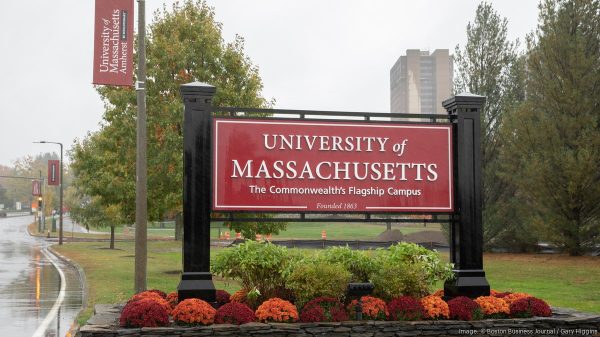School community reacts to recent deaths of African Americans at hands of police
ARTISTIC INTERPRITATION: Students created a piece for propoganda project in their art class about the deaths of colored men by police officers
Three African Americans from ages 12 to 43 have been killed by police officers in the past nine months, prompting hundreds of protests across the country regarding police brutality and race relations.
The first incident this past year involved Eric Garner, a 43-year-old man from Staten Island who was choked to death by a group of police officers for allegedly selling untaxed cigarettes in May. The police officers utilized the choke-hold method which goes against New York police policy.
None of the police officers were indicted in the grand jury decision, even though the whole event was captured on a cell phone video camera and posted on the internet.
“Based on what I saw in the video, I think that the police over extended their force,” said English teacher Heather Ellis. “Garner wasn’t resisting arrest and was very respectful while the police were talking to him. I could see how he felt the police were getting into his personal space.”
At one point in the video while the police officers were on top of Garner, he said that he couldn’t breathe. The officers didn’t stop, and he died as they were on top of him. A week later, a medical examiner ruled that his death was considered a homicide. The grand jury did not indict any of the officers involved in the killing of Garner.
The next situation, and possibly the most publicized one of the three, involved 18-year-old Michael Brown from Ferguson, Missouri who was fatally shot by Officer Darren Wilson after an altercation between the two men. The grand jury also didn’t indict Wilson.
“I don’t have all the evidence that came about but I think that the grand jury felt that there wasn’t enough to go forward,” said School Resource Officer Steve Fleming. “I certainly would believe that they did their best to review all the evidence and not be bias, and render their decisions, which they did.”
Ellis called the Michael Brown situation a very murky case. “All we have is what the police officer says and what Michael Brown’s friends say. There’s no video surveillance to ascertain what really happened.”
Because of the lack of evidence in the Brown case, the Obama Administration has proposed a body camera initiative. If approved by Congress, 50,000 body cameras would be purchased and distributed to police departments across the country in order to better document police action to provide evidence in possible future cases
Senior Waipiolani Chang said, “I don’t think the whole body cam system will do anything because Eric Garner’s death was videotaped and (the police officer) wasn’t indicted.”
“Here is a case of somebody recording the situation and all the evidence is there. It’s pretty clear what happened,” said Ellis. “I find it really distressing that the grand jury would not indict the police officer for what he did in the Garner case.”
The third incident that has caused unrest throughout the country is the shooting of 12-year-old Tamir Rice, an African American boy who was reported to be playing with a handgun at a park in Cleveland, Ohio.
A security camera recorded a police car pulling up to the gazebo where Rice was. The footage shows that within seconds, two police officers got out of the car and opened fire at Rice. Afterward, police found that what had looked like a handgun was actually a BB gun. Neither of the police officers in Rice’s case have been convicted of any crimes.
Protesters have taken to the streets to express their outrage at the way police officers reacted to these situations and how the race of the victims could have played a role in that all across the country.
Some of these protests across America have been peaceful, like one that took place at Mount Holyoke College last month, while others have involved looting and destroying local buildings.
“I find it unfortunate that in some cities, specifically Berkeley California, there are people protesting peacefully, trying to shed a national light on what’s happening and then you have some people who perhaps were drinking too much, destroying their own communities,” said Ellis. “That doesn’t help solve any problems.”
Many Americans are wondering where the country should go from here. “I think [the government] should go one by one to each police department and really weed out all the corrupt police officers,” said Chang. “There should be higher standards for police training. I think they shouldn’t just keep allowing racist cops and people with anger problems into the system.”
Ellis said she believes there needs to be an honest conversation in America about race and racial inequality. “We as a society need to start owning up to the things that are happening,” said Ellis. “There also needs to be a conversation about what the mental health is of these individuals who are becoming police officers.”
Fleming cautioned against labeling all police officers based off the actions of the few police officers that have been in the news.“I think it’s a shame that people are trying to make all police officers out to be these bad people,” said Fleming. “We (police) are all trained to rise to each level that is needed to effect an arrest or protect others as well as ourselves.”
Nelson may be reached at [email protected]
Mastorakis may be reached at [email protected]









